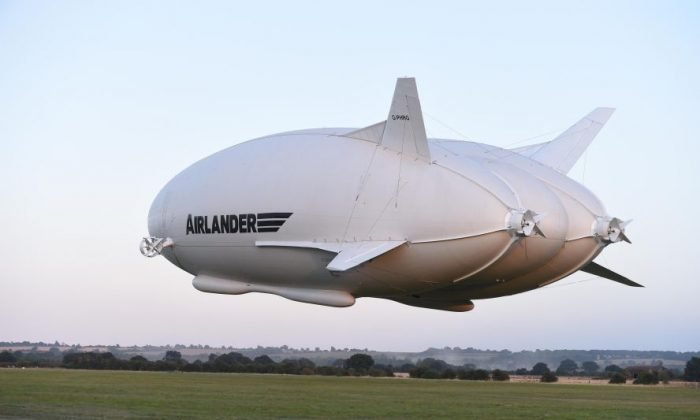‘Light Airships: Ideal for Arctic Defence and Disaster Response, Say Experts’
One expert says airships could also potentially be used in NATO maritime surveillance missions and NORAD air policing missions. Some defence experts are calling for airships to defend the Arctic north, saying technological advances have given them new practical usefulness amid challenges from hostile powers like China and Russia. This case was most recently made by U.S. Lt.-Col. Cam Kovarek in her paper “Floating a different boat: operationalizing airships for homeland security in the Arctic.” The report published by the Macdonald-Laurier Institute says today’s lighter-than-air (LTA) platforms are much more versatile than the blimps, dirigibles, aerostats, and zeppelins of the past and argues LTAs are becoming a “viable” and “effective solution” to counter security challenges in the Arctic. “They can be piloted by a crew, operate unmanned by remote direction, or be left tethered and unattended. Their design is inherently safe,” Lt.-Col. Kovarek wrote in the report. “Hybrid airships can lift and transport weight at a much more efficient rate than airplanes and helicopters. Airships also don’t require long runways or large swaths of tarmac as they are capable of vertical take-off and can land on nearly any surface, including ice, snow, and water.” Lt.-Col. Kovarek said she believes the airships could be ideal for Coast Guard use and could prove invaluable in disaster responses to vulnerable Arctic populations. Other potential uses include NATO maritime surveillance missions, NORAD air policing missions, and logistical support to current and future military installations. “In the Arctic, the three maritime choke points along the Northwest Passage and Northern Sea Route—the Bering Strait, Baffin Bay, and the Greenland-Ireland-UK (GIUK) gap—are arguably the most important locations for increased monitoring,” she said. The idea sits well with Cameron D. Carlson, assistant director at the Center for Arctic Security and Resilience at the University of Alaska. He said LTAs “make a great deal of sense” and are “very practical” in their ability to “carry an incredible, immense amount of weight” with a low carbon footprint. “We’re only hurting ourselves right now not developing these types of air capabilities…[for] domain awareness and… to put infrastructure into places that are incredibly challenging for us to get access to right now,” he said in an interview. The German dirigible Hindenburg crashes to earth, tail first, in flaming ruins after exploding at the U.S. Naval Station in Lakehurst, N.J., on May 6, 1937. The disaster, which killed 36 people after a 60-hour transatlantic flight from Germany, ended regular passenger service by lighter-than-air airships. (AP Photo/Murray Becker) The U.S. and many Arctic states that are also members of NATO are ramping up their defences. Airships would not surprise me, but sophisticated electronic surveillance devices are more likely to be used. Alistair D. Edgar, a Wilfrid Laurier University political science professor who co-authored a book on the Canadian defence industry, told The Epoch Times that drones were a more practical option for coastal and Arctic surveillance, though not cargo transport. In “practical terms,” Mr. Edgar views military airships as “still speculative rather than likely,” and said the United States was more likely to advance them than Canada’s Department of National Defence (DND).
Source link




